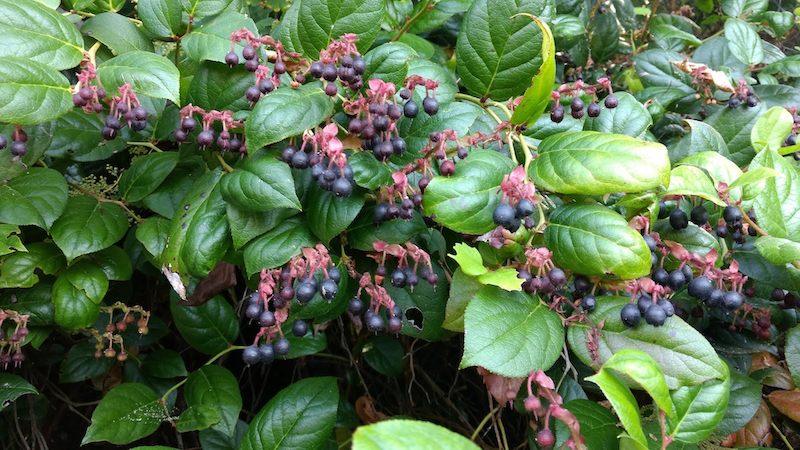It’s berry season! Many of us have fond childhood memories of being sent to pick berries for our parents, with promises of forthcoming jam or pancakes, but often, more berries ended up in our bellies than in the bucket. While one can make all kinds of delectable confections with wild local berries, it seems to me the purest pleasure is still eating them straight from the source.
Bowen Island hosts a wide range of wild edible berries. Salmonberries ripen first, as early as June. They grow all over the island but Hatchery Trail, near the Meadow, is a great place to eat salmonberries to your heart’s content. The tall bushes arch overhead, creating a veritable forest. Salmonberries look somewhat like raspberries and can ripen to a deep red; however, I find they are the juiciest, sweetest and tastiest when they are still yellow with only a hint of red.
Red huckleberries ripen next and there is an overlap with salmonberry season. You can spot red huckleberries along nearly every trail and roadside. Their tiny oval leaves hide equally small berries underneath. They look like small blueberries but ripen to red not blue. The texture is also similar to blueberries but huckleberries are less sweet, even when fully ripe.
Thimbleberries are also common on the island, although not many people are familiar with them. Their broad leaves somewhat resemble a maple. The delicate berries start to ripen in July and grow bright red. They have a very mild taste and the berries are on the “dry” side compared to salmonberries or blackberries. I surmise that they are called “thimbleberries” because they are completely “hollow” inside, so when you pick one off a bush, you can stick them on the end of your finger like a thimble.
Salal is ever-present on Bowen and a traditional First Nations food source. Blue-black salal berries ripen from mid-July through August. In comparison to the other berries, I think they’re not actually as “tasty”... but they can be dried or made into savoury sauces.
Besides salmonberry, Bowen Island has several species of “blackberry”: Himalayan, Pacific (“trailing”), cutleaf, and black raspberries. Most people are familiar with Himalayan blackberries. They have thick green stems with big spikes and can take over a whole yard if you don’t cut them back aggressively. The berries are big, juicy, and sweet when ripe but they might not ripen until August.
Pacific (“trailing”) blackberries are the only blackberry species native to British Columbia. They are fairly common on the island, but easy to miss. They don’t spread as readily as the European blackberry, and you might only find a single strand growing in the underbrush. Cutleaf blackberry leaves are “lacier,” and their berries are much smaller than the Himalayan blackberries. Black raspberries, native to eastern North America, have thin whitish stems and smaller leaves. The berries ripen earlier, and are smaller and drier but still very tasty.
Enjoy harvesting Bowen’s wild berries this summer, but remember: as with mushrooms, only eat wild berries when you are 110 per cent sure of their identity!



